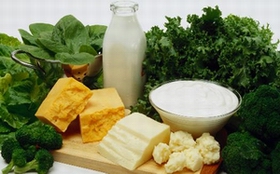 According to the ‘Australian Food Statistics 2011-12’ report released recently by the Australia Government, Australia’s dairy exports were worth $2,311 million in 2011-12.
According to the ‘Australian Food Statistics 2011-12’ report released recently by the Australia Government, Australia’s dairy exports were worth $2,311 million in 2011-12.Japan has been by far Australia’s most valuable dairy export market, with total dairy exports to Japan in 2011-12 valued at $491 million. Singapore is also currently a valuable dairy export market, with $227 million worth of Australian dairy products going there in 2011-12.
Indonesian opportunities
In 2011-12, Australia exported $153 million worth of dairy products to Indonesia, which was a drop from $169 million in 2010-11. According to the government report, in 2011-12 that total included $106 million worth of milk and cream and $47 million worth of other dairy products.
Indonesia will need around 900 million litres – or double local production – in new liquid milk supplies by 2017, according to a new report from Singapore consulting firm Stanton Emms Strategy Consultants (Stanton Emms), and this could provide substantial new opportunities for Australia’s dairy industry.
Australia is one of Indonesia’s preferred suppliers, according to Stanton Emms. The report, “Strategy and Strategic Directions in Indonesia’s Dairy Product Industry and Market to 2017”, found that increased dairy export from Australia to Indonesia could be valued at an additional US$200 million to US$270 million (at current prices) in foreign trade in 2017.
The Indonesian government’s target for milk production growth of 24 per cent in its latest industry development program is more likely to come in at between 5 and 10 per cent per year, according to the study. If a 5 per cent growth rate is achieved over the period to 2017, Indonesia will still have a local shortfall of around 600 million litres when compared to demand today.
But Tony Emms, Stanton Emms Managing Partner, said there is a chance that the opportunity for Australian dairy companies could be lost if efforts are not made to make a deal with Indonesia’s food price and distribution body, the Bureau of Logistics (BULOG). He suggested that “protectionists” in Indonesia might be concerned about an increase in dairy imports.
“New demand is coming from more affluent customers and, very importantly, very aggressive new productive investment and marketing strategies of companies such as Nestle, Danone and Yakult, to name a few, will create a new scenario for Indonesia’s protectionists to focus on, namely a huge surge in imports,” said Mr Emms.





